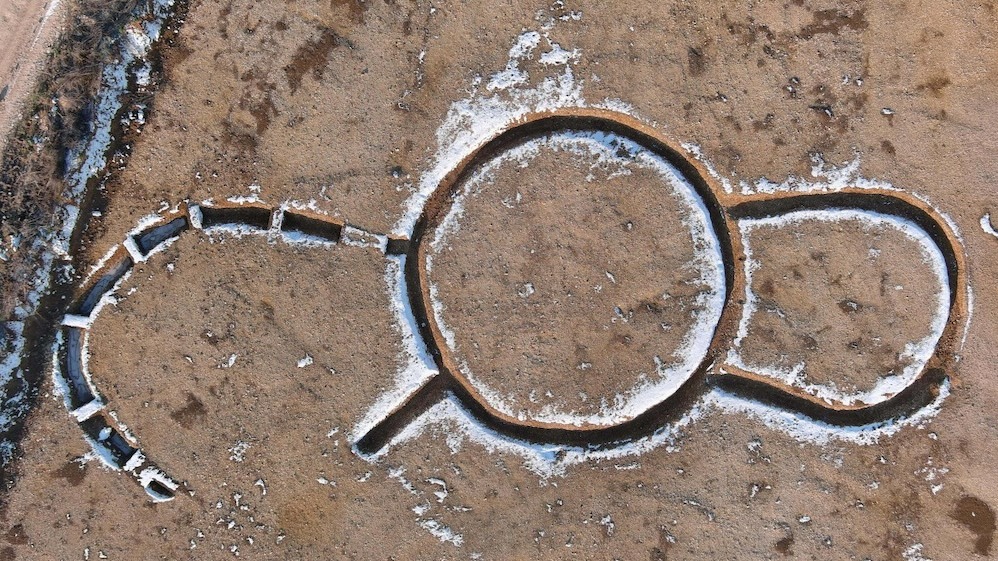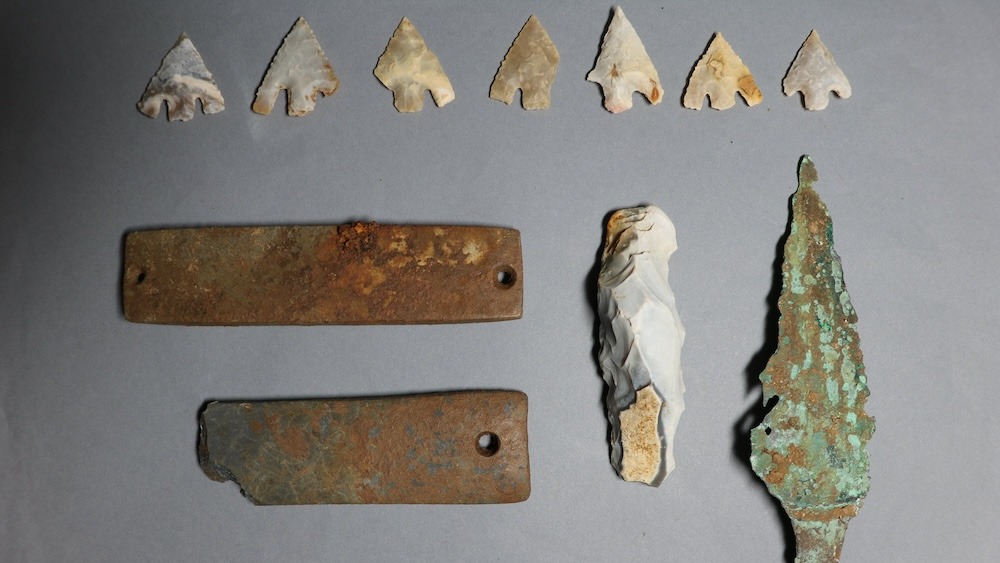'Unprecedented' discovery of mysterious circular monument near 2 necropolises found in France
The mysterious monument site appears to have been occupied across multiple historical periods.

Archaeologists have discovered an unusual horseshoe-shaped monument and a collection of weapons and ornaments spanning multiple historical periods at a site in France.
Located in Marliens, a commune in eastern France, the site has a large bowtie-shaped structure, whose middle sports a circular construction measuring 36 feet (11 meters) in diameter. This center circlet is interconnected by a 26-foot-long (8 m) horseshoe-shaped structure on one side and a jug-handle-shaped feature on the other, according to a translated statement from the French National Institute of Preventive Archaeological Research (INRAP), which carried out the excavations.
Researchers described the finding as "unprecedented," as there are no other known sites with similar shaped constructions.
Based on the plethora of artifacts found there — including a bundle containing seven flint arrowheads, two protective armbands worn by archers, a flint lighter and a copper-alloy dagger — archaeologists determined that the site was occupied during different time periods.
For instance, cut flint objects found in a nearby ditch likely date to the Neolithic period, while the weapons may be traced to the Bell Beaker culture, which emerged around 4,500 years ago, Archaeology News Online Magazine reported.
Related: Dozens of Neolithic burials and 'sacrificed' urns and ax discovered in France
Researchers are radiocarbon dating the artifacts to pinpoint their ages, according to the statement.
Sign up for the Live Science daily newsletter now
Get the world’s most fascinating discoveries delivered straight to your inbox.

Other constructions found at the site include several wells with clay lining at the bottom that are thought to be from the Bronze Age, as well as a necropolis with five circular enclosures containing burial remains and a funeral pyre. Based on five copper-alloy pins, an amber-beaded necklace and pottery shards scattered there, archaeologists determined that this portion of the site dates to sometime between 1500 and 1300 B.C.
Lastly, archaeologists unearthed a second Iron Age necropolis containing urns with cremated remains, as well as a collection of bracelets and rings.
Editor's note: Updated at 2:10 p.m. EDT on April 23 to change Archaeology Magazine to Archaeology News Online Magazine.
Jennifer Nalewicki is former Live Science staff writer and Salt Lake City-based journalist whose work has been featured in The New York Times, Smithsonian Magazine, Scientific American, Popular Mechanics and more. She covers several science topics from planet Earth to paleontology and archaeology to health and culture. Prior to freelancing, Jennifer held an Editor role at Time Inc. Jennifer has a bachelor's degree in Journalism from The University of Texas at Austin.









